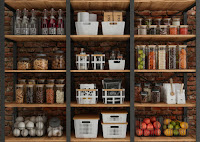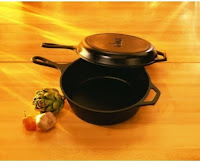Sugar. Although it's unhealthy to eat it on a regular basis, you'll be glad you have it in a crisis. Sometimes you'll need some quick energy if you have to move fast. It's also a huge morale boost if you can sweeten your drinks or make cakes and candies.
Salt. I cannot overemphasize the importance of salt. Many leading survival experts believe salt will be the number one bartering item after the SHTF. Not only is it great for seasoning bland food, it's important for preserving food, healing wounds and skin problems, making soap, and much more.
Baking Soda. This one has LOTS of uses. Most people think of it as an important ingredient for baking, but it's also great for cleaning teeth, cleaning dishes, cleaning clothes or anything with stains, absorbing odors, and much more. You can get a huge bag of baking soda for less than $20.
Instant Beverages. Things like instant coffee or cocoa. So long as they're vacuum sealed, they'll stay good for years and all you need is warm water. There's nothing like a hot drink if it's cold and/or you're tired. You'll be glad to have this.
Liquor. Although not technically a food, it's still something you'll want to have. A drink or two every now and then can be very relaxing. But even if you don't like to drink, you'll still find this to be a great barter item. In addition, it's great for treating wounds.
Wheat. You'll need a food mill, but it's worth it because wheat can last several decades. 25% of the world's food is make from wheat, including flour, bread, pasta, and other staples.
White Rice. The great thing about rice is how many calories you get for a such a low price. Just make sure it's white and not brown, as brown rice has a fairly short shelf life.
Honey. A healthy, natural sweetener that never goes bad. After a few years of storage it can get hard, but all you have to do is heat it up.
Distilled White Vinegar. It's important for cooking certain items, but it can also be used for cleaning.
Soy Sauce. This one never goes bad because of all the salt it contains. It's a tasty way to season vegetables, especially if you're stir-frying them in a skillet over a fire.
These are just 10 of the 37 food items that will be sold out after the next crisis. To learn more, please Visit My Site.
The Prepper's Pocket Guide: 101 Easy Things You Can Do to Ready Your Home for a Disaster








